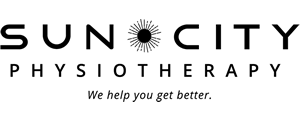“Ring Theory” – Integrated Systems Model
Some people think the Integrated Systems Model (ISM), sometimes known as ‘Ring Theory’ sounds like hocus pocus. But here’s the general theory which I am elaborating on from the ISM’s founder, British Columbia’s Diane Lee.
Imagine the body is a series of rings. Your cranium, each vertebrae, the pelvis, shoulders, hips, knees and ankles. It’s easiest to imagine in your thorax where your ribs attaching to your thoracic vertebra create actual rings.
Now imagine that one of those rings shifts due to an injury or simply due to an adopted movement pattern. Another ring in the stack will shift to accommodate and maintain the body’s centre of gravity within its base of support (for example, your feet, if you are standing).
These are normal adaptations and usually don’t cause us any problems, especially if those rings align again when we go to move. If they remain however, a non-optimal alignment can result in increased stresses on a joint, muscle, or nerve for example. As you can imagine this can become a concern over time resulting in overuse injuries or preventing an acute injury from healing as quickly.
If we can find the ‘driver’ or the ring shift that makes the overall alignment during a task better, I believe that is the path to recovery.
Things I love about this model:
- You choose a task you want to improve on. For example, if stair climbing is something you find difficult we’ll work on that together. Even if you have multiple areas of concern, choosing a task requires a focus on function versus pain. And as function goes up, pain typically comes down.
- I correct possible drivers until I find the one that makes the task easier. Often, if you are open to it, you will feel the difference in your ease of movement and / or notice the difference in the alignment of your body right away.
- Even if you don’t have pain, but just want to have more ease doing an activity, this model will work for you.
- Injuries don’t have to be chronic. They can be acute. Often a few sessions after the initial treatment of an acute injury, I will use the ISM to help make sure that any possible reasons for your initial injury are addressed. For example, was your shoulder injury precipitated by a thorax that isn’t rotating optimally when you throw? Or is it more related to your hips?
Downfalls of this method of assessment:
- You have to be open to it. I try my best to help you feel the difference after a correction is made but the reality is if you aren’t open to the idea, it won’t work for you. And that is okay. There are many ways to treat an individual. This is just one of them.
- People who have never or are unwilling to turn inward and be sensitive to changes in their body’s state have the most difficulty buying into this method. But often, I will make one correction and they will have a ‘wow’ moment – their task is no longer as difficult, feels lighter and more free.
Who this approach is for:
- Most often these are people who have tried many other therapies yet haven’t experienced satisfying recovery.
- People with multiple areas of concern.
- Those with acute or chronic injuries.
- People who would like a particular task or activity to feel easier.
During my assessments clients often say to me, “Why are you interested in that old injury? Or in that condition?” It is because your story paints a picture of your possible drivers too. If the Integrated Systems Model interests you, I hope you’ll come in and share your story with me.
